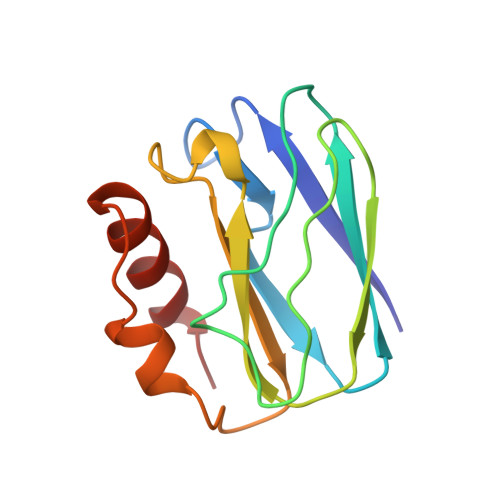Pseudospecific docking surfaces on electron transfer proteins as illustrated by pseudoazurin, cytochrome c550 and cytochrome cd1 nitrite reductase.
Williams, P.A., Fulop, V., Leung, Y.C., Chan, C., Moir, J.W., Howlett, G., Ferguson, S.J., Radford, S.E., Hajdu, J.(1995) Nat Struct Biol 2: 975-982
- PubMed: 7583671
- DOI: https://doi.org/10.1038/nsb1195-975
- Primary Citation of Related Structures:
1ADW - PubMed Abstract:
The structure of pseudoazurin from Thiosphaera pantotropha has been determined and compared to structures of both soluble and membrane-bound periplasmic redox proteins. The results show a matching set of unipolar, but promiscuous, docking motifs based on a positive hydrophobic surface patch on the electron shuttle proteins pseudoazurin and cytochrome c550 and a negative hydrophobic patch on the surface of their known redox partners. The observed electrostatic handedness is argued to be associated with the charge-asymmetry of the membrane-bound components of the redox chain due to von Heijne's 'positives-inside' principle. We propose a 'positives-in-between' rule for electron shuttle proteins, and expect a negative hydrophobic patch to be present on both the highest and lowest redox potential species in a series of electron carriers.
Organizational Affiliation:
Laboratory of Molecular Biophysics, University of Oxford, UK.















